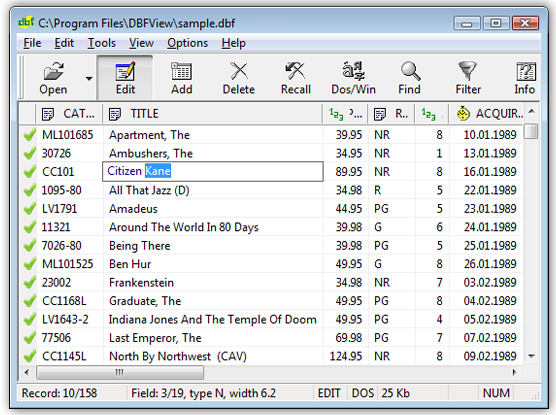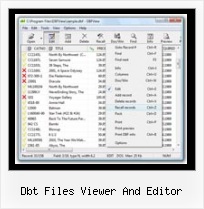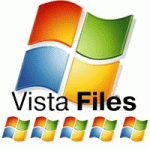DBF File Viewer

DBF Converter & DBF Viewer - the most popular
DBF editor and viewer for
Windows 9x/NT/2000/XP/Vista/Win7!
View dbf file, edit dbf file, and print dbf files!
DBF Converter & DBF File Viewer is a compact but powerful tool for viewing, editing, and printing DBF-format databases. DBF Converter & DBF Viewer uses its own database access tools and does not require external drivers for connection to databases (such as ODBC or BDE) or additional libraries (.OCX, .DLL). The program allows you to add, delete, recall, sort, zap, pack records, view and edit files in DOS or Windows character sets, get detailed database information, export to txt/html/csv/xls/xlsx format, and search in a file.
Overview
DBF Converter & DBF Viewer is a compact but powerful tool for viewing, editing, and printing DBF-format databases - screen shot.
It supports dBase, Clipper, FoxPro, Visual FoxPro and other DBF file formats. In contrast to many analogues, DBF Converter & DBF Viewer is completely a Windows 9x/NT/2000/XP/Vista program. The user friendly graphic makes working with databases simple and hassle free.
Most important parts of DBF Converter & DBF Viewer code are written in Assembler, therefore the basic operations performs fast and the .exe file is very small (only 410Kb!).
DBF Converter & DBF Viewer uses its own database access tools and does not require external drivers for connection to databases (such as ODBC or BDE) or additional libraries (.OCX, .DLL).
The program allows you to add, delete, recall, sort, zap, pack records, view and edit files in DOS or Windows character sets, get detailed database information,export dbf files to txt/html format, convert csv and xls / xlsx to dbf format, import/export from MS Excel (including MS Excel 2007!), and search in a file. DBF Converter & DBF Viewer comes with Installer/Uninstaller, documentation in HTML format, and sample files.
How to Use
Dbf File Viewer Installing
Just unzip "dbfview.zip" and run "setup.exe".Double click on DBFView icon or use command line: dbfview.exe filename.dbf ,for file with long name: dbfview.exe "long file name.dbf" or "c:\long path\dbfview.exe" "long file name.dbf"

Order DBF Converter & DBF Viewer for Windows
Ordering online is easy and secure. You can select the most suitable payment method: credit card, bank transfer, check, PayPal etc.. Paying a registration fee, you get the right to use the program for life and to get free updates within one year.
open pdf files vfpPostal Address
For feature requests, troubleshooting, general help contact Customer Support at  . Make sure to include details on your DBFView version, browser, a link (or relevant code) and operating system.como importar csv para postgres
. Make sure to include details on your DBFView version, browser, a link (or relevant code) and operating system.como importar csv para postgres
Feedback
Byron Pate - Software Developer
First off I would like to tell you what a great product DBFView is. I'm trying to convert a large dbase file into SQL Server and the dbf file is giving me a great deal of problems, and DBFView has allowed me to go in and find the records with problems and fix them.
Henry Taylor - Software Developer
I don't do a lot of work with databases, but in connection with a research project I got hold of a CD with a 30-meg DBF file on it - 74,624 records, 23 fields, total of field widths 414 characters. At first I tried copying the file to the hard drive and reading it with Quattro Pro. This was possible, but it was slow, and pushed the program to an intolerable number of illegal errors leading to shutdown. So I went on the net and searched for DBF readers, hit apycom.com pretty soon, read the home page and decided DBFView sounded useful and inexpensive, downloaded it, and have found it to be very serviceable. The program was easy to install, reads quickly from the CD-ROM drive, finds individual records reliably and quickly enough for my purposes, and in general seems like a tremendous bargain.
Mike Koch - System Administrator
I found DBFView after a lengthy search on the net. I was looking for an interface that could provide a view, update, and edit interface for a large database that could reside on an internet drive (like X-Drive), where I and co-workers out of state could access and quickly update our numbers (basically job/data tracking for telecommuters). The company does photo-editing (school, corporate, restorative work) utilizing high-speed internet, waveform compression, and some good computer artists. Maybe 5000 negative scans per year.
Anyway, nobody wanted to install full-blown database programs, sql server or the like, the company is not that big, nor is the data itself considered critical. So for this type of user, your interface provides clean, quick, simple, no syntax required, put the data in and go. Others I looked at tried to do the same but usually forget the "people element", and I don't have time to learn sql syntax and help them complete their programs. (Incidently, I used to have a lot of fun programming DBase II and III, then I saw Access and cried).
Screenshot
Awards
Blog
Best Web Design Software
27 Innovative and Creative CSS Bootstrap Image Carousel and Gallery Demos for 2018
Bootstrap Responsive Navbar Builder
Free Website Builder
Effective CSS Bootstrap Modal Video Backgrounds and Dropdown Menu Demos
More
Convert DBF to CSV
Convert DBF to XLS
Export DBF to Excel
Convert DBF to Excel 2007
Open DBF File
Export CSV to DBF
Edit DBF File
Convert XLS to DBF
Conversion Xls To Dbf
Convertisseur Exel En Dbf
Text To Dbf Converter
Foxpro File Formats
Batch File Commands
Convert Excle File To Dbf File
How To Open Dbf In Excel
Edit Dbf Files
File Dbf Itu Apa
View Foxpro Dbf
Can Dbf Files Be Edited
Excel Do Dbf
File Open Dbf
Export Excel To Dbf File









